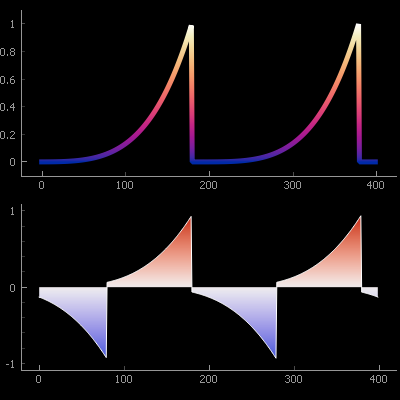Does PyQtGraph work on Windows, Linux, and macOS? Yes, PyQtGraph is a cross-platform library designed to run smoothly on all three major desktop operating systems.
This comprehensive guide covers everything you need to know about installation, compatibility, performance, and troubleshooting across different platforms.
What Is PyQtGraph?
Before diving into platform compatibility, let’s quickly review what PyQtGraph is.
PyQtGraph is a pure-python graphics and plotting library built on PyQt (or PySide) and NumPy. It is widely used for:
- Real-time data visualization
- Scientific plotting
- Interactive GUI applications
Its cross-platform design ensures the same functionality and performance regardless of your operating system.
Does PyQtGraph Work on Windows, Linux, and macOS?
Yes PyQtGraph supports all three platforms:
PlatformSupportedNotes
Windows ✅ Fully functional, commonly used
Linux ✅ Stable on major distros (Ubuntu, Fedora, etc.)
macOS ✅ Compatible with current versions (incl. Apple Silicon with some setup)
PyQtGraph depends on cross-platform components: Python, PyQt5/PySide2, and NumPy, all of which are fully compatible with Windows, Linux, and macOS.
System Requirements and Dependencies
To ensure smooth operation across platforms, here’s what you’ll need:
Required:
- Python 3.7 or higher
- PyQt5, PyQt6, or PySide2
- NumPy
- Optional: SciPy, OpenGL for advanced features
Recommended Tools:
- pip or conda
- Virtual environments (venv or conda)
- Git (for contributing or downloading the latest versions)
Installing PyQtGraph on Windows
Step-by-Step Guide:
i). Install Python via Homebrew or Python.org:
bashbrew install python
ii). Set Up Virtual Environment:
bashpython3 -m venv pyqtgraph-env
source pyqtgraph-env/bin/activate
iii). Install Dependencies:
bashpip install pyqtgraph PyQt5 numpy
iv). Run the Built-in Demo:
bashpython -m pyqtgraph.examples
macOS Notes:
- On Apple Silicon (M1/M2), use the arm64 version of Python for best performance.
- Some widgets may behave differently in older versions of macOS.
Testing Cross-Platform Compatibility
To ensure your app works seamlessly across all systems:
- Test the same PyQtGraph-based app on Windows, Linux, and macOS.
- Use virtual machines or Docker containers to simulate environments.
- Avoid OS-specific paths or features.
- Use Qt’s abstraction for file dialogs, events, and layouts.
GUI Behavior Differences Across Platforms
Though PyQtGraph is cross-platform, some GUI behaviors can vary due to the underlying Qt framework:
- Element Windows Linuxmac OS
- Fonts Consistent May need manual tuning May scale differently
- Menus Standard Custom styling may vary Native integration
- High-DPI Scaling Native Varies by DE Often requires scaling settings
Tip: Always test your application at different screen DPIs and resolutions.
Updating and Managing Dependencies
Cross-platform apps require careful dependency management. Use these tools to stay updated:
Tools:
- pip list and pip freeze to check versions
- requirements.txt or Pipfile to lock versions
- conda for easier management of scientific dependencies
Troubleshooting Platform-Specific Issues
Common Problems and Fixes:
- Windows:
- Missing DLLs → Reinstall Visual Studio Redistributables.
- QT not loading → Check environment variables.
- Linux:
- Permission errors → Use sudo or proper virtualenv.
- Missing packages → Install required Qt libraries (sudo apt install qt5-default).
- macOS:
- Python path issues → Use Homebrew Python and venv.
- PyQt not installing → Install using pip install PyQt5==5.15.9.
Developing Cross-Platform Apps with PyQtGraph
Tips for building fully cross-platform apps with PyQtGraph:
- Avoid platform-specific APIs unless needed
- Use relative paths and os.path.join()
- Use QFileDialog, QVBoxLayout, and QGridLayout for consistent UI
- Test regularly on all platforms during the development
Real-World Use Cases on Multiple OS
Use Cases:
- Scientific Labs: Real-time plotting on Linux-based lab systems
- Industrial Automation: PyQtGraph dashboards on Windows machines
- Education: Teaching data visualization on macOS laptops
- Data Analysis Tools: Built once, deployed everywhere
These examples showcase PyQtGraph’s reliability across all operating systems.
Conclusion
So, does PyQtGraph work on Windows, Linux, and macOS? Absolutely. PyQtGraph was built with cross-platform compatibility at its core. Whether you’re a researcher running Ubuntu, a data scientist using macOS, or a developer coding on Windows .
PyQtGraph will perform reliably and consistently across all environments.Test your apps, manage dependencies wisely, and enjoy the freedom of building once and running anywhere.


